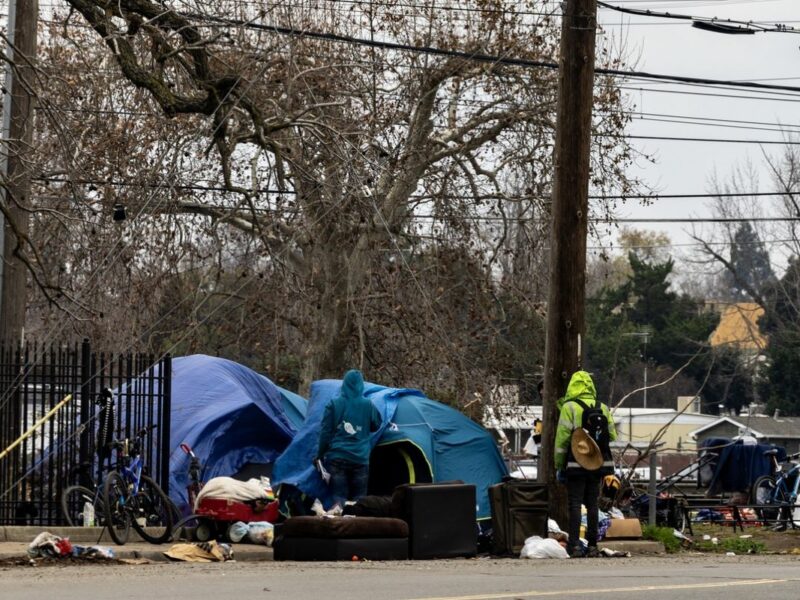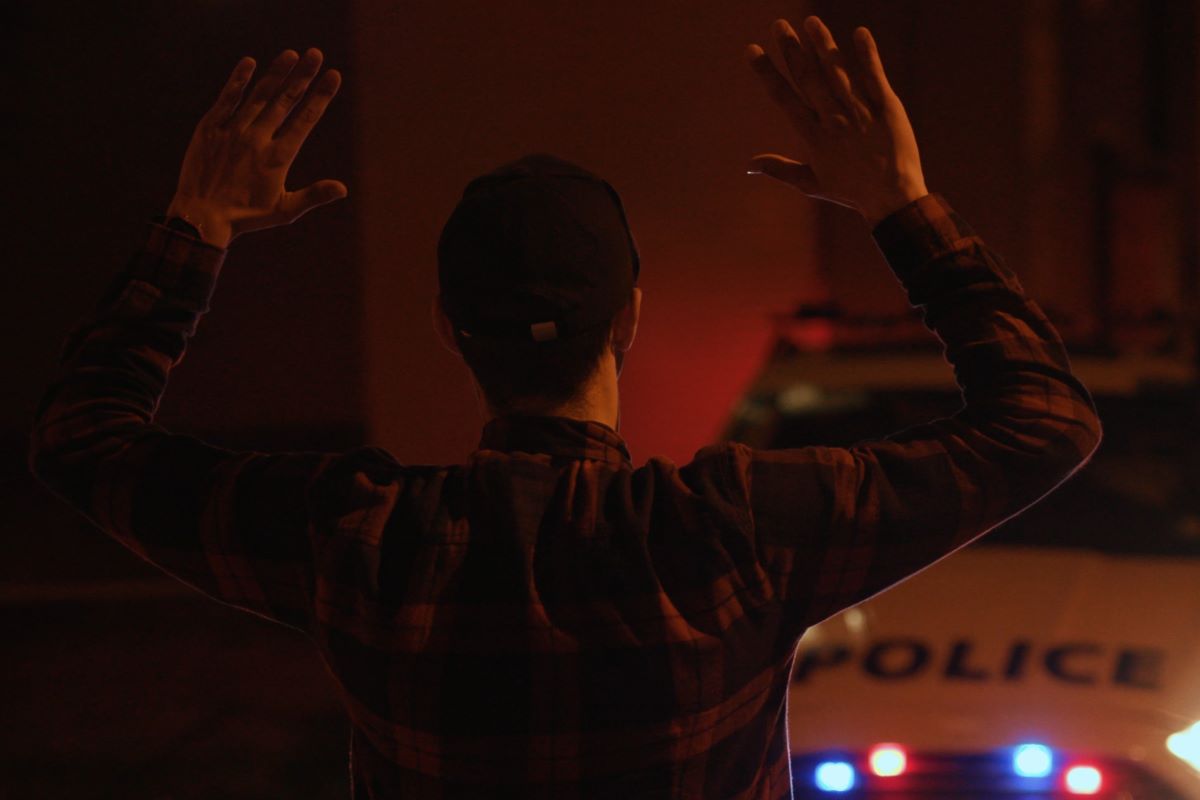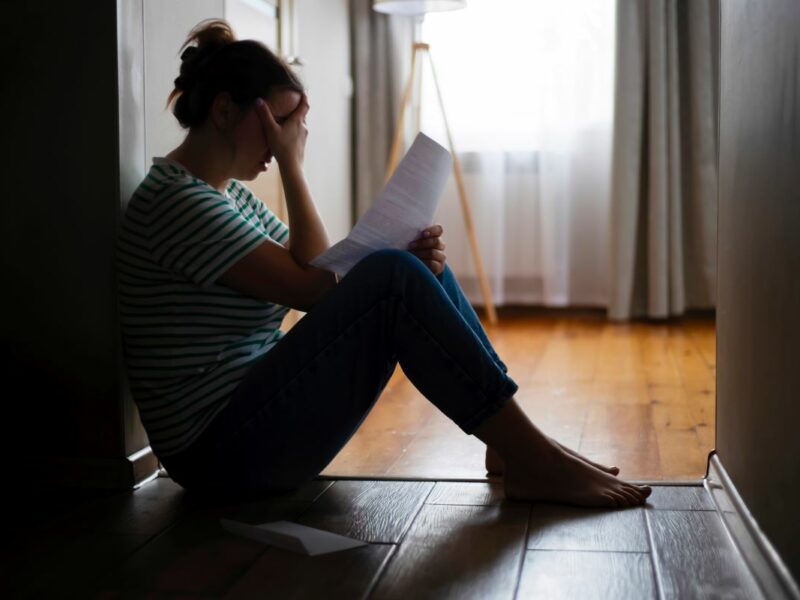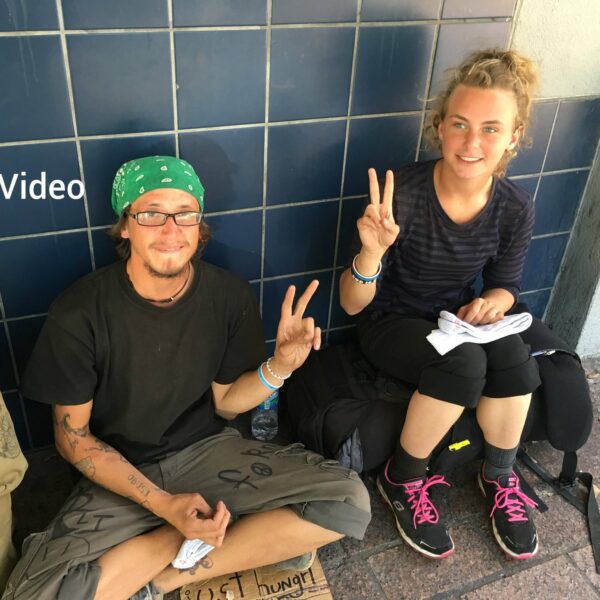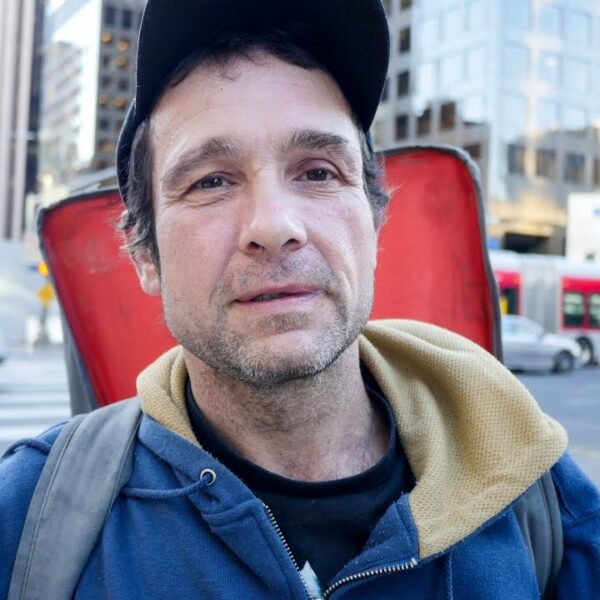Hands Up: The Data Behind Failing Criminalization Policies
“We know that in communities that prioritize the enforcement of these kinds of low-level offenses against people experiencing homelessness, the solve rate for violent crimes actually goes down,” Legal Director Eric Tars of the National Homelessness Law Center.
As a new election year rounds the corner, the political arena is brimming with hot-button issues. Unlike the recent past, when homelessness was an obscure legal topic relegated to small advocacy circles and laws against homeless people were quietly passed behind closed doors with the general public largely unaware, this year appears to be markedly different.
According to YouGov Today, the vast majority, or 67% of voters to be precise, regard homelessness as a major American issue that could sway them toward one presidential candidate over the other.
Given the sweeping awareness, politicians are now forced to address the homelessness crisis. They can no longer push the problem from one side of the country to another as if it were a pile of dust. Instead, they have shifted their focus toward criminalization by claiming this action will “clean up the streets.”
Campaign slogans falsely proclaim that arresting people out of homelessness will not just fix the problem but restore safety to inner cities and other regions adversely affected by the crisis. This ideology has a flaw, however. The data suggests that the opposite is true.
Criminalizing Homelessness Doesn’t Make Communities Safer. It Makes Them More Dangerous.
Homeless people are generally arrested for violating something legally referred to as a “quality-of-life ordinance.” These are laws that make it illegal for people enduring homelessness to engage in life-sustaining activities in public.
It would be impossible for a homeless person not to violate these laws because if they did not do these things, they would, simply put, die. Here are a few examples from the long list of things homeless people can be arrested for doing:
- Standing
- Sitting
- Sleeping
- Resting
- Going to the bathroom
- Asking for money for food
- Storing their belongings (such as photo license identification, life-saving medications, food, and clothing) in a public place
- much more
In most places, these laws are classified as “low-level offenses.” In some rogue regions, they are taken more seriously. However, it could be argued that from a moral standpoint, these actions are, at the very least, still technically “low-level offenses” when compared to other crimes like assault, rape, and murder.
Prosecuting Low-Level Crimes Increases Violent Crime Rates
An eye-opening study conducted by reporters at the Washington Post which examined just short of 70,000 criminal cases, concluded that prosecuting low-level crimes increases violent crime rates by shocking amounts. Likewise, a refusal to prosecute low-level offenses was associated with a downward trend in violent criminal activity. To quote the Post directly:
“Not being prosecuted for a nonviolent misdemeanor, we found, decreases the likelihood of any new criminal complaint — an arrest, basically — within two years by 58 percent and decreases the number of new criminal complaints by 69 percent.”
The study then goes on to explain how being prosecuted for a low-level offense like loitering poses serious obstacles to housing and employment, which, in turn, inflates rates of recidivism by unfathomable amounts. However, the legal director of the National Homelessness Law Center, Eric Tars, wisely points out that it doesn’t end there.
In addition to low-level citations giving way to more serious charges for nonviolent offenders down the road, removing law enforcement officials away from violent crime scenes is known to increase rates of violence by all offenders.
“This is because police officers are spending so much time, you know, shooing people out of their campsites that they don’t have time to investigate the actual violent crimes,” Tars explained.
“And so, this approach actually makes the entire community less safe, not more safe. Violent crimes go unsolved, but nonviolent actions that are labeled crimes, like sleeping on the streets, are getting all the attention. Furthermore, criminalizing homelessness subliminally promotes acts of violence and hate against people experiencing homelessness.”
“So, it is all on a continuum, whether it’s state-sanctioned violence or individual vigilante acts. It all comes out of this narrative and continuum of actions which stem from policies against people experiencing homelessness.”
Crimes Against Members of the Homeless Community Continue to Rise as this Vulnerable Population Faces Imprisonment
“We have lots of statements from law enforcement officials saying that they don’t think criminalizing homelessness is a good way to uphold their mission of ensuring public safety. And we as a country really need a broader conception of what public safety means,” Tars continued.
“First and foremost, it should mean that every person has a safe, adequate place to live. That will contribute far more to public safety than hiring more police officers to do low-level law enforcement against homeless people.”
All studies, new and old, scholarly and independent, conclude that homeless people are more likely to be victims than perpetrators of crimes while simultaneously being more likely to get arrested. This is a grave injustice against some of the most vulnerable members of our population.
Many law enforcement officials are now speaking out against the criminalization of homelessness and electing to spend their time doing the one thing they were trained to do – arresting violent criminals.
Talk to Your Representatives About Creating Safer Communities by Making Housing Affordable Again
There was a time in the not-so-distant American past when homeownership was a more attainable goal. There was also significantly less homelessness before housing prices grew at quadruple the median wage rate.
We already have the blueprint for homelessness reduction. We only need to refer back to what used to work. Talk to your representatives about creating safer communities by making housing an accessible commodity and a human right for all.





